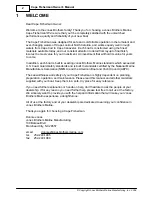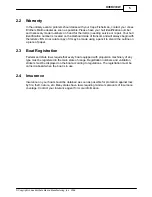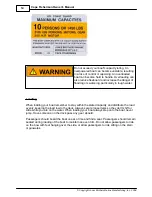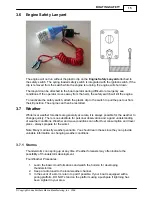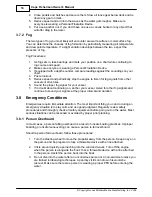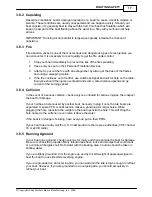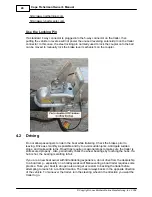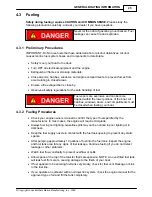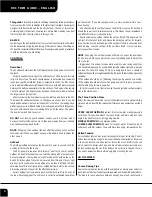
BOATING SAFETY
11
© Copyright Jones Brothers Marine Manufacturing, Inc. 2008
3.3.2 Personal Flotation
All passengers must have a US Coast Guard approved personal flotation device(PFD).
PFDs must be obtainable at anytime. PFDs must be in good condition and the appropriate
size for the intended wearer. Small children and non-swimmers are advised to wear a PFD
at all times. In addition to PFDs, a Type 4 throwable flotation device such as a ring buoy or
boat cushion is also required.
Types of PFDs:
Type I
This PFD has the greatest buoyancy. It is designed to turn an unconscious
person in the water from a face down to a vertical or slightly backward
position. Type I is the most effective for all waters and especially further out
where rescue may be delayed.
Type II
Turns the wearer into the same position as Type I but the turning action is
not as pronounced because it is less buoyant. The Type II is generally
more comfortable than a Type I.
Type III
Allows the wearer to place themselves in a vertical or slightly backwards
position. The Type III has the same buoyancy as the Type II. It has little or
no turning ability and may not be adequate in rough waters.
Type IV
The Type IV PFD is designed to be thrown to a person in the water and
held until rescue. It is not designed to be worn. The most common Type IV
PFDs are buoyant cushions or ring buoys. The Type IV shall be
immediately accessible and in good condition.
IMPORTANT: Drowning remains the single most prevalent cause of boating fatalities, and
each year the Coast Guard data shows that approximately 8 out of 10 of these victims are
not wearing a life jacket. Wearing a life jacket is the single most important precaution
boaters can take to ensure there personal on-water safety. Like seat belts, life jackets only
work when worn. Today's life jackets are attractive, functional and comfortable to wear for
extended periods. For more information, visit the website for the Personal Flotation Device
Manufacturers Association and download their "Facts about Lifejackets" pamphlet:
http://www.pfdma.org/library/downloads/documents/pfdmabrochure.pdf
3.3.3 Horn
All Class 1 boats are required to carry a hand, lung, or power operated horn that is audible
for at least one mile. If your Cape Fisherman is equipped with a horn, it meets USCG
requirements.
3.3.4 Visual Distress Signals
USCG approved visual distress signals are required when operating on U. S. waters. When
boating, these devices should be functional. Examples include: flares, orange smoke,
orange flag (day use), or an electric distress light (night use).
A pyrotechnic or non-pyrotechnic Visual Distress Signal is required. Regulations require this
equipment on all recreational boats used in coastal waters, including the Great Lakes and
the territorial seas, to a point where the waters are less than two miles wide. This also
applies to boats owned in the United States when operating on the high seas.
Pyrotechnic and non-pyrotechnic equipment must be US Coast Guard approved, in good
operating condition and in a readily accessible location. Equipment with a maximum
Summary of Contents for Cape Fisherman
Page 1: ...Cape Fisherman Owner s Manual...
Page 6: ......
Page 7: ...WELCOME Part I...
Page 9: ...OVERVIEW Part II...
Page 12: ......
Page 13: ...BOATING SAFETY Part III...
Page 26: ......
Page 27: ...GENERAL BOATING INFORMATION Part IV...
Page 37: ...OPERATION Part V...
Page 55: ...MAINTENANCE AND SERVICE Part VI...






